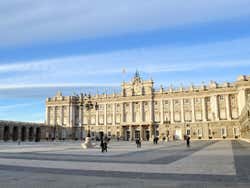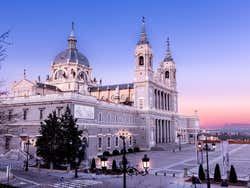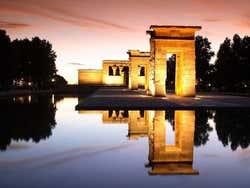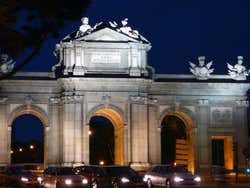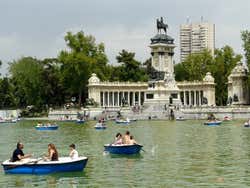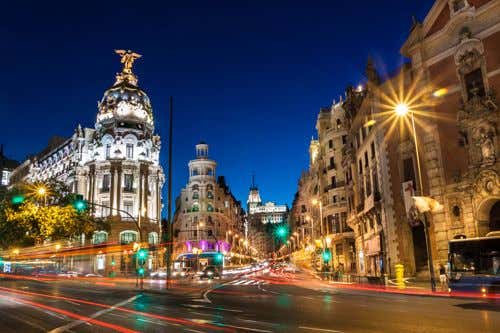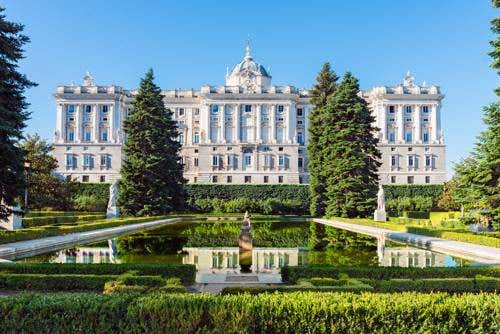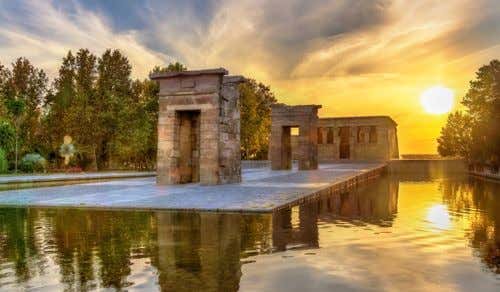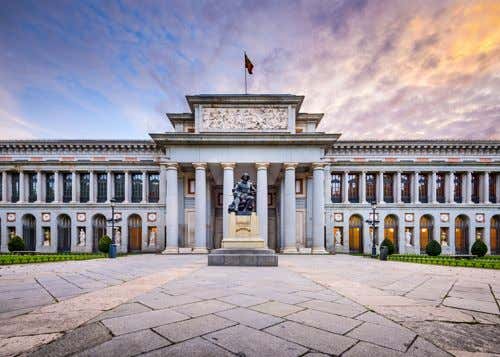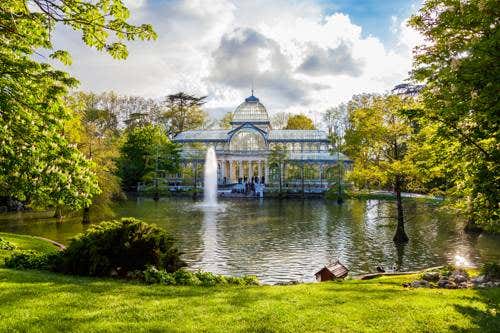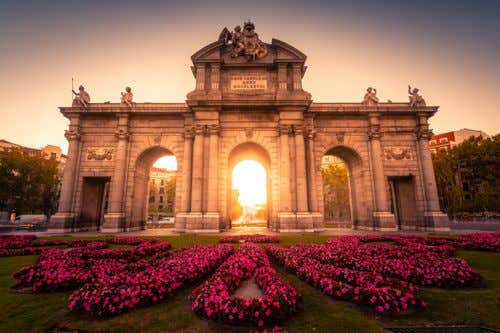
Two Days in Madrid
Planning a weekend in Madrid? We've put together a two-day itinerary to help you explore all the city's top sights and enjoy your trip to the fullest.
Our two-day Madrid itinerary is made for a weekend, assuming you'll arrive in the capital on Friday afternoon and stay until Sunday. If your trip falls on different days, be sure to check the opening hours of the attractions you plan to visit, so you don't have any unpleasant surprises on the day you go.
Arrival Day
Once you have left your luggage at the hotel, head to Puerta del Sol. This central plaza is one of the most famous in Madrid and the busiest part of the capital. After observing the statue of the “Oso y el Madroño” and other renowned symbols like the KM 0, we recommend taking a walk down the nearby shopping streets like Calle Preciados and exploring the well-known Gran Vía.
Gran Vía and Puerta del Sol’s adjacent streets are packed with restaurants, cafés, and bars where you can have a traditional Spanish meal and then discover Madrid’s great nightlife.
A great way to start exploring the city on your first day is by booking the open-top night bus tour.
If you prefer a guided experience on foot, consider joining the Mysteries and Legends free tour, which takes you through the city's historic center with a knowledgeable guide.
Day One
The day begins bright and early in Puerta del Sol to take some photos of the city’s iconic symbols (if you haven’t already seen them on your arrival), such as the Kilometer zero and the statue of the bear and the berry tree (Oso y el Madroño). Once you have seen the Puerta del Sol, take the street “Calle Arenal” until you get to the Teatro Real (Royal Theatre), commonly known as the Ópera.
In front of the Opera House is the Plaza de Oriente, a remarkable square designed during the nineteenth century. If you walk through the plaza you'll see the largest royal palace in Europe, which you can visit by taking a guided tour of the Royal Palace of Madrid. After leaving the royal residence, head to the Almudena Cathedral, Madrid's Catholic cathedral, which is located next to the Palace.
If you're planning on visiting both locations, we recommend booking the following combo package:
If you take Calle Mayor, you'll get to Plaza de la Villa, a square in the historic center of Madrid that used to house the city’s town hall. Continue walking down Calle Mayor until you get to Plaza Mayor, a great place to go for “tapas” or to have a typical “bocadillo de calamares” (a calamari sandwich). The nearby Calle Cava de San Miguel also offers numerous restaurants.
If you haven’t yet visited Gran Vía, continue down Calle Mayor to get back to Puerta del Sol and walk down Calle Preciados, one of Madrid’s main shopping streets, until you get to Plaza de Callao. From there turn left down the impressive Gran Vía and walk to Plaza de España.
From the square, take Calle Ferraz in the same direction until you get to the Parque del Oeste and the Temple of Debod. The temple was donated by Egypt and dates back to the early second century BC. We suggest relaxing in the park after visiting the shrine until nightfall. The park sits on a hill overlooking the Casa de Campo (Madrid’s largest park), which makes it one of the best spots to watch the sunset.
If you want to experience Madrid's nightlife like a real local, we recommend checking out one of the following two shows (they'll knock your socks off):
Day Two
On the second day, you can begin at around 10 am at the Banco de España metro station to visit the iconic Cibeles Fountain, a beloved symbol of Madrid. Then, walking along Paseo del Prado, you'll see the Madrid Stock Exchange on your left and the Monument to the Fallen for Spain in Plaza de la Lealtad.
Continuing along Paseo del Prado, you'll pass two of Madrid's most famous hotels, the Ritz and the Palace. Between them lies Plaza de Cánovas del Castillo, home to the majestic Neptune Fountain.
Just a short walk from the fountain is the Prado Museum, one of the city's premier museums, featuring masterpieces by artists such as Velázquez, El Greco, Bosch, Goya, and Rubens.
If you want to see the very best pieces in the Museum and learn about them with the help of an expert art history guide, we recommend checking out this Prado Museum Guided Tour.
Once you have visited the museum, keep heading down Paseo del Prado, walking past the Real Jardín Botánico de Madrid (Royal Botanical Garden) until you get to Atocha, Madrid’s main railway station. This is where the March 11th terrorist attacks took place.
Take Calle Alfonso XII until you come upon the absolutely breathtaking Retiro Park. The park on Sundays is packed with people going for a stroll, children, musicians, magicians, and other street artists, especially if it's sunny and warm.
If you want to make the most of this sunny Sunday in the park, making sure you see all the most charming spots, you might enjoy this Retiro Park Guided Walking Tour.
After exploring the Park, head to one of its main entrances, the Plaza de la Independencia, where the Puerta de Alcalá stands. It's one of Madrid’s most emblematic symbols. After taking a few photos of this striking triumphal arch, take Calle de Alcalá towards Plaza de Cibeles. From here, we'll offer you a few different options depending on your taste.
You can either visit Plaza de Castilla and the Cuatro Torres (Four Towers), Madrid’s more modern business district.
On the other hand, if you prefer to continue discovering the city’s main museums, we suggest heading to the Museo Reina Sofía and the Thyssen-Bornemisza Museum.
If you want to skip the lines at the museums, the best option is to buy your tickets ahead of time:
For those of you who are football fans and would like to visit Real Madrid’s football stadium, why not take the metro to the Santiago Bernabeu Stadium?
Check out the following link to get your tickets for the Santiago Bernabeu Stadium.
Alternative option: If your second day in Madrid is a Sunday, you might want to check out El Rastro street market in the La Latina district during the morning.
More Than Two Days in Madrid?
If you're in Madrid for over two days, as well as visiting the Rastro Market, you can also go to the Parque de Atracciones (Madrid’s oldest amusement park), the Madrid Zoo Aquarium or see a Flamenco show in one of Madrid’s most famous “tablaos”—you'll find different options among which the Corral de la Morería stands out. You can buy tickets here:
Tickets for the flamenco show at the Corral de la Morería
Madrid is a city that never sleeps and offers endless things to do and places to visit.
Another option is to visit some of Madrid’s most beautiful surrounding towns. These are some of our favorite day trips from Madrid:
